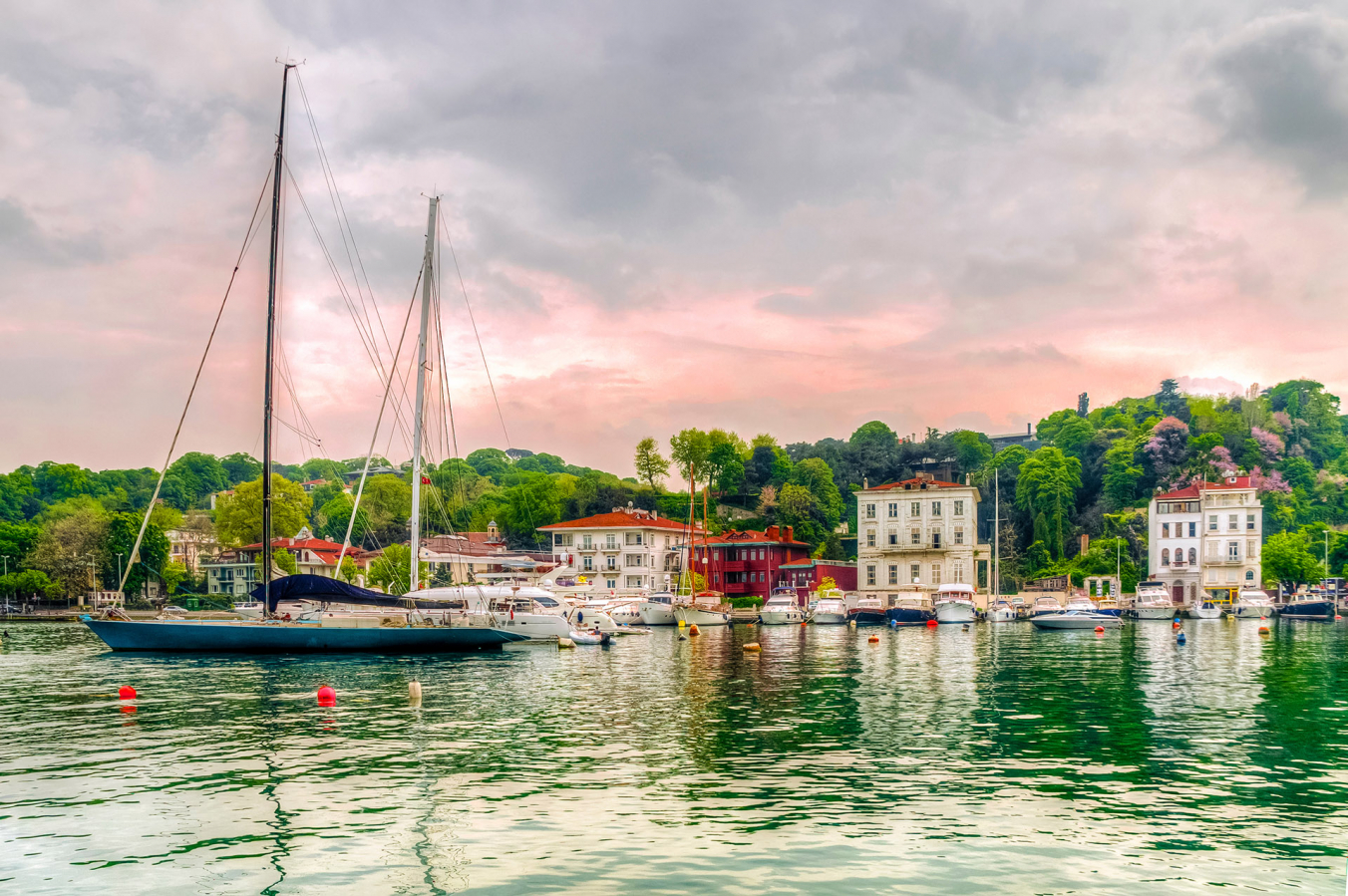
Waterfront Mansions
A water canal has fascinated people with its beauty throughout history, and mansions lined up like pearl necklaces on both sides of this canal. Considered one of the values of our country with its magnificent structures and timeless designs, our mansions are also referred to as Turkey's most prestigious and valuable houses in today's real estate market.
The majority of these magnificent buildings, which were used as summer mansions for Ottoman sultans, members of the dynasty, ulemas, pashasades, and aristocrats, were built by the famous architects of the period without adhering to a single architectural trend but under the influence of Ottoman architecture and adding elements that reflect the taste of their owners. It is also essential that these wooden and masonry-dominated structures have an aesthetic appearance and shape according to the angles of receiving the sun and wind.
It is known that the colour of the mansions varies according to the status of their owners in the Ottoman period. While the burgundy-red mansions, frequently seen among the mansions, are called “Aşı colour,” which indicates that they belong to the members of the state, the dark colour indicates that the mansion has a non-Muslim owner. However, nowadays, it can be said that the mansions are dressed in different colours and do not reflect this old tradition.
Until the 1920s, transportation to the Bosphorus was mainly provided by sea; The common feature of all mansions is that they had a boathouse in the past since land transportation is provided only by goat roads. The boathouses, located on the lowest floor of the building and provide direct access to the building through a hatch, have been included in the buildings because they have lost their meaning today. There are 366 first, second and third-degree historic mansions on the Bosphorus. When we add the mansions that are not historical monuments, this number increases to 600. Only 150 of them have been able to preserve their originality fully. We have compiled the exciting stories of the very curious mansions for you.
Yedi Sekiz Hasan Paşa Mansion
The mansion, built by Asaf Pasha in Çubuklu in 1870, is named after Yedi Sekiz Hasan Pasha, the police station commander during the reign of Sultan Abdulaziz. During the reign of Sultan Abdülhamit II, he was given the rank of Pasha with his loyalty to the sultan and his attempt to prevent the revolution. Later, he was promoted to the position of Müshir. Hasan Pasha, who couldn't read and write, is addressed this way because he signed 7/8. The mansion, restored in 2009, preserves its original structure, and the Mehtabiye Mansion, which was not present in the original, was added next to it. The mansion with three floors and bay windows is one of the most beautiful examples of Ottoman architecture.
Kıbrıslı Mansion
18th-century Kıbrıslı Mansion, built in the last quarter of the year, has the longest dock after Emine Valide Pasha and Amcazade mansions, with a quay length of 64 meters. The Kıbrıslı Mansion, built in Kandilli, for the grand vizier of Abdülhamid I, İzzet Mehmed Pasha, was later bought by Kıbrıslı Mehmet Emin Pasha in 1840 and named after him. Kıbrıslı Pasha, who served as grand vizier to three different sultans, is one of the most influential statesmen of the Ottoman Empire. Empress Eugenie, King of Iraq Faysal II and Poet Yahya Kemal Bayatlı are some names who stayed in the mansion. In 1980s, Sevda Hill, the mansion’s grove, was sold to Saudi Prince Abdullah Bin Abdulaziz.
Ahmet Afif Pasha Mansion
It was built by the famous architect Alexandre Vallaury, who was also the architect of the Pera Palace Hotel, between 1900-1910 by Ahmet Afif Pasha, the head of the seaside quarters, on the İstinye-Yeniköy coastal road. Ahmed Afif Pasha Mansion is extraordinary and unique in its architecture… With its lace-like front facade, elegant balconies and onion-headed domes, there is no second example in the mansion's architecture. To have a Bosphorus view from all its rooms, the sides of the building gradually ascend towards the sea, and four towers serving this purpose were built. Harem and Selamlık are under the same roof as opposed to normal. The historical structure of the building has been preserved until today and is one of the most magnificent mansions of the Bosphorus. After Ahmet Afif Pasha, the mansion passed to Muhayyeş, a businessman from Beirut who helped Atatürk a lot during the Syrian wars. Muhayyeş, who also owns the Pera Palace Hotel, hosted Agatha Christie, one of the hotel's regulars, in his mansion. According to rumours, the author's famous novel "Murder on the Orient Express" was written in this mansion.
Count Ostrorog Mansion
The mansion, built in Kandilli in 1850 by the Minister of Justice, Server Pasha, was purchased by the Polish Count Leon Valerien Ostrorog in 1904 and expanded by combining it with the mansion of Ahmet Aski Pasha next to it in 1905. The mansion consisting of the combination of these two mansions is known as the Count Ostrorog mansion. Leon Valerien Ostrorog studied and taught Islamic Law at Oxford and The Hague Universities. He opened the doors of his mansion to the soldiers injured in the Çanakkale War and provided every opportunity for the wounded to heal. With its magnificent view of the grove behind it, its unique location on the Bosphorus, its 1882 bath and fountain in its garden, this private mansion today belongs to the Koç family. Rahmi Koç named the study room in the mansion The Pierre Loti Room because Pierre Loti, a close friend of the Ostrorog family, stayed in this room when he came to the mansion.










